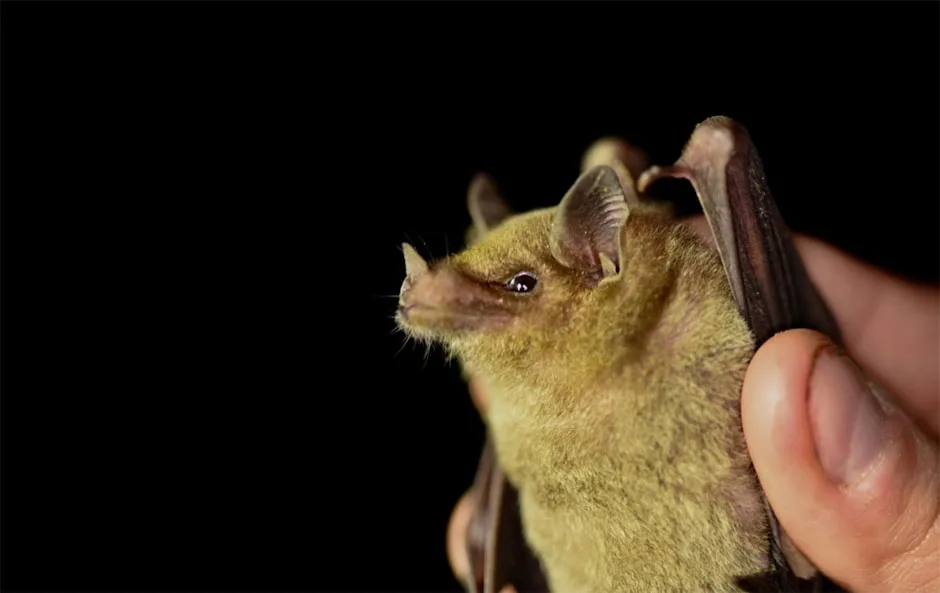Scientists have shed light on the ancestral origins of the famous tequila bat.
The critically endangered tequila bat is native to the Americas and lives in caves in some of the hottest desert areas of Mexico.The bat plays a vital role in pollinating the blue agave plant from which tequila is made.
Bat populations are threatened by habitat loss, their roosts are often disturbed, and people fear them both due to myths and as potential disease carriers.
Read more about bats:
- Bats 'pose no greater viral threat' to humans than other species
- Vampire bats form 'long-term reciprocal relationships'
Scientists have long known that some tequila bats migrate in Mexico’s spring months to the Sonoran Desert to give birth to their pups and pollinate a variety of plants.Other populations inhabit southern Mexico year-round, forming large breeding colonies in the winter months.
As bats are highly mobile and mix constantly with other bat populations, it is hard for conservationists to know whether they are protecting the best sites for the tequila bats to roost.
Scientists led by the University of Bristol analysed DNA from the species to see whether the bats inhabiting southern Mexico year-round have a similar ancestral origin to those that migrate to the Sonoran Desert.

Researchers from the university, the Centro de Investigacion Cientifica y de Educacion Superior de Ensenada and the Universidad Nacional Autonoma de Mexico found the elusive creatures by travelling to remote caves in Mexico to collect DNA skin samples.
Bat expert Dr Angelica Menchaca, who led the study, said: “Tequila bats are beautiful, especially after they arrive back from feeding as they return covered in pollen, completely yellow, a sign of how important they are to this ecosystem.
“Once we located the bat colony, our aim was to collect DNA skin samples from the bat’s wing which heals quickly and doesn’t harm them.
“We would wait until the bats went out to forage at around midnight and then enter the caves that were filled with thousands of baby bats, all packed together in nurseries, waiting for their mums to return.”
Read more about conservation:
- African Black Rhino numbers increasing thanks to 'immense' conservation efforts
- Endangered orangutan numbers starting to stabilise thanks to conservation efforts
After analysing samples, the team was able to identify the bats’ mitochondrial DNA and use this to trace the maternal line of the different populations to understand the ancestral descent of the species.
Explaining the findings, Dr Menchaca, from the University of Bristol, said: “Contrary to current practice, our study demonstrates that the species must be managed as two conservation units in Mexico." That is, the species is made of two separate groups in need of conservation.

She added: “We have shown that tequila bat populations that establish maternity colonies in the Sonoran Desert in northern Mexico show a distinct migratory behaviour, breed during the summer, have specific habitat requirements and belong to a maternal line distinct to their southern counterparts.
“In the present context of an accelerated rate of habitat loss, increased fear of bats and decreased appreciation as ecosystem service providers, understanding how we can help support this important species survive these threats is even more relevant.
“We are studying other differences related to their behaviour and morphology that will also help us understand how these bats adapt to diverse habitats.”
Reader Q&A: Why do bats live in caves?
Asked by: Jasper Liddle, London
They do it to avoid danger and save energy. The largest bat colony, in Bracken Cave, Texas, is thought to contain 20 million bats. Some species use caves for daytime roosting; others hibernate there for the winter because caves provide optimal humidity, a stable low temperature, and few disturbances from light or noise.
Temperature is important because bats are warm-blooded but very small. Unlike other mammals, they let their internal temperature drop when they are resting, going into a state of decreased activity to conserve energy. Hibernation is an even deeper state of inactivity in which their body temperature drops to that of the cave.
A special adaptation allows bats to hang upside down for months without using any energy. A tendon from their talons is connected to their upper body, not to a muscle. So when they hang, the weight of their body holds them in place. They can then drop straight into flight when they wake up.
Read more: